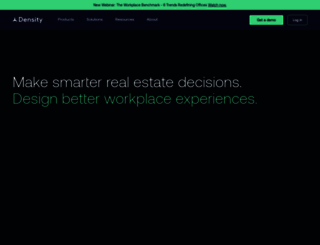Workplace Performance Analytics & Optimization | Density.io
Page Load Speed
3 sec in total
First Response
37 ms
Resources Loaded
1.8 sec
Page Rendered
1.2 sec

About Website
Click here to check amazing Density content for United States. Otherwise, check out these important facts you probably never knew about density.io
Density shows you how people use your space and helps you improve your workplace ROI.
Visit density.ioKey Findings
We analyzed Density.io page load time and found that the first response time was 37 ms and then it took 3 sec to load all DOM resources and completely render a web page. This is a poor result, as 55% of websites can load faster.